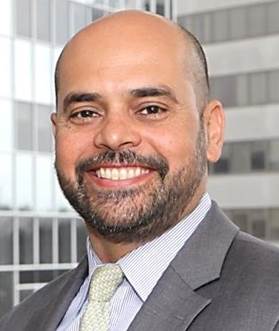The market for technology talent has been white hot over the past year. What will the next twelve to eighteen months bring? On a recent episode of the Tech Whisperers podcast, two executive recruiters in the CIO retained search space, Martha Heller, CEO of Heller Search Associates, and Art Hopkins, executive director of Russell Reynolds Associates’ Information Officer search practice, shared their thoughts about the state of the tech talent market, the evolving role of the CIO, and key considerations for recruiting and hiring technology leaders.
To drill down further into the trends and themes CIOs need to be paying attention to, I checked in with three more experts in technology leadership recruitment: Shawn Banerji, managing partner for the Data, Digital, and Technology Leaders Practice at Caldwell; Judy Kirby, CEO of Kirby Partners, a retained executive search firm placing healthcare IT and cybersecurity leaders; and Tony Leng, a managing director at Diversified Search Group who leads the firm’s Digital Transformation and CIO/IT Officers practices.
The four of us had a wide-ranging conversation about the broader environment and how it’s affecting the role of technology leaders. What follows is that conversation, edited for length and clarity.
Dan Roberts: What are some of the macro trends you’re seeing that are affecting the technology industry and market for talent?

Shawn Banerji, managing partner for the Data, Digital, and Technology Leaders Practice, Caldwell
Caldwell
Shawn Banerji: We are in a very interesting period. It’s kind of like the Dickens classic, A Tale of Two Cities: “It was the best of times. It was the worst of times. It was the age of wisdom. It was the age of foolishness.” There are all these contrary and contravening forces going at it, and so many global mega trends are up in the air right now.
Looking at the significant trends towards globalization over the last 20 years, is there going to be a great decoupling, and if so, what does that mean? What are the economic and organizational implications? Technology is a central lever in this. There’s increasing talk around what can or cannot be exported from this country to other parts of the world. China, for example, has an alternate universe as far as social media and ecommerce are concerned.
It’s a fascinating time for functional technology practitioners. Whether you’re a CIO, CTO, chief digital officer, a data leader, cyber — the opportunity for these leaders is unparalleled when you consider the impact that they can make on their enterprises and on their industries. But it has never likely been more fraught with challenge. And the temperament and the patience on the part of many stakeholders has contracted. People always like to talk about CIO tenure. Why is it two or three years? Well, in some cases, it’s because people come in, they accomplish, and they move on. But we’re also seeing that, if you can’t deliver measurable results in a relatively compressed timeline, the patience to see it through isn’t necessarily there.
Dan Roberts: Tony, what do senior leaders need to be thinking about in terms of how these issues affect the technology organization?

Tony Leng, managing director, Diversified Search Group
Diversified Search Group
Tony Leng: First, they need to understand what this new technology environment entails. At the base level, you’ve got compute, and what are you going to do? Are you going to have your own data centers, are you going to be in the cloud, or hybrid? In the middle, you’ve got data. There’s just so many aspects of data, which is the fuel for the other piece, what people are now calling digital, but really, it’s the front end of the business — all the systems of operations, engagement, the old ERPs but also a whole lot of new engagement systems, which are API-enabled microservices, low code, no code, that whole environment.
So you’ve got those three things you need to be thinking about as you transition into a new world. You also need to understand the architecture of that modern technology stack, but almost more importantly, the business model architecture. Because, as Shawn talked about, you’ve got these global environments and different things happening in different parts of the world. Do you want all your data centralized so you get an holistic view of your organization? Maybe because you’ve got business in China and other parts of the world — those engagement systems may be in separate business units, or perhaps you organize around separate products lines, etc., so you need to think deeply about your business model. And then infusing all of this is your whole cyber posture, which is made increasingly complicated by this new modern architectural stack and the increasing interconnectivity of systems.
Dan Roberts: How is this impacting the role of the technology leader and the skills they need?
Tony Leng: As Shawn said, moving into this new environment, you have to do it with nimbleness and speed, but you have to do it with a value creation mindset. You’ve got to have leaders who can articulate the digital vision, be that ‘tech whisperer’ to explain to senior executives your journey into the future, and then you need to be able to properly manage the change management initiative — or all your great strategies won’t deliver their promised value.
Another big skill set that’s absolutely required is financial and business acumen, because you need to be able to explain to people the value that will be created. Yes, you need to know technology, but, boy, you need to be a leader that can get things done quickly in a commercially sound manner, creating a lot of value and articulating not only the business model but the overall strategy for the organization. That means you also need to understand all the global forces, and you need to understand the pulse and the heartbeat of the organization from a cultural perspective. I think it’s become the next toughest job after the CEO role.
Dan Roberts: Judy, what are some of the trends you’re seeing with CIOs in the healthcare space?

Judy Kirby, CEO, Kirby Partners
Kirby Partners
Judy Kirby: Most of them aren’t dealing with the global issues, but where the CIOs are struggling is in becoming that true executive. Tony’s right on — it’s the toughest job outside of the CEO, but most healthcare organizations don’t realize that. They still see it more as operational. When there’s a downturn in the market, one of the first things they cut is innovation rather than looking at, how can this save the organization money, and how can it help with staffing and the critical nurse shortage.
Business leaders need to understand the technology and how it affects the organization. So many things have been thrown at organizations, from cybersecurity to AI to precision medicine to telehealth. Still, I’ve talked to two CIOs in the last two days that have lost their job. The CEOs aren’t seeing the value of technology and what the CIO brings to the organization. The question is, why? Why are they not positioning their own value and the value of technology within the organization?
Dan Roberts: There’s a lot of discussion right now about turning your CIO into your next CEO. What are your perspectives on that?
Shawn Banerji: It’s a logical continuation in terms of career trajectory for many CIOs. If technology is the nerve center and the enabler for everything in the business, their process orientation has to be high. Invariably, they will have had success around business transformation and change management. They’re going to have a reasonably high level of technical fluency. It’s a logical path.
I think the big question that remains is, do these individuals truly possess the strategic vision that’s needed to serve in that leadership role? I think COO is the more obvious destination for many of them, but that is not to say that there aren’t exceptional individuals. Finance has often been the proving ground/breeding ground because boards gravitated to this person’s mastery of the numbers, which hasn’t always worked out either. So I think we’re going to see more of it. But it’s TBD if it’s going to be some kind of crescendo tidal wave.
Dan Roberts: What are some of the areas CIOs need to develop to become successful CEOs?
Tony Leng: In addition to financial acumen, what many CIOs need if they aspire to be a CEO is desire for the role, and a kind of toughness, because being a CEO can be a lonely job. You’ve got to make some really tough choices. It’s less a collaborative team sport than the CIO position. You have to have that slightly tougher edge and want to work and be maniacally focused to devote all your time to the job. The CEO role isn’t for everybody, frankly, and there are many executives who’ve said, ‘I don’t want that,’ especially if you’re in a public company setting. So I think the desire to be in that position has to be pretty high.
Judy Kirby: The other thing is that a lot of the CEO’s job is outward facing from the organization rather than inward facing. And I think that’s another area many CIOs are missing. They may take part in CIO councils and things, but the CEO, whether it’s board meetings, stakeholder meetings, or stockholder meetings, CIOs just haven’t participated in a lot of that. I think that’s where they really need to grow as well to move into this role. But as far as knowing every part of the organization and what’s going on, there’s probably no one outside the CEO who does that as well as the CIO.
Dan Roberts: Why should someone who’s not looking for a new job connect with an executive recruiter? What’s the benefit of that relationship?
Tony Leng: You need to play the long game in this. It’s about getting to know a number of people and thinking of your career as kind of an arc, and the arc of your career should be developing skills, but also gathering people and relationships within the various companies you work in. Always protect the way you leave an organization, and nurture those relationships. And treat your relationships with the search community with the same long-term mindset, because these relationships developed over your career are only going to serve you well in multiple ways — helping you build your team, finding your next assignment, or cogent career advice.
Shawn Banerji: A career doesn’t just happen to one any longer. You have to own your own career. If you have a credible recruiting relationship, that can only serve to benefit you, whether it’s market intelligence, hearing about specific opportunities, compensation questions, what I should be paying my people. We come across so much information and we’re more than happy to usually share it and refer you to other resources. These things can either be transactions or they can be an investment in the relationship.
Dan Roberts: Any final thoughts about the market and what we can expect going forward?
Judy Kirby: Doing your due diligence on the organization as far as their economic strengths, their position in the market, their opportunity to be purchased, acquired, or whatever is more important than ever. We are seeing acquisitions and mergers, and that can affect the position you take.
Tony Leng: I think everyone is increasingly realizing that you drive the top line and the bottom line through the effective use of technology. And while there’s going to be a bit of a pause and a wait-and-see in people’s minds, I think it’s only a pause, and towards the back end of 2023, it’ll pick up again.
Shawn Banerji: Technology is not going away. Digital transformation is not going away. An appetite for data and how it can be operationalized is not going away. I think what you will see is perhaps a slight slowdown in the volumes. But certainly, from a practitioners’ standpoint, people who are talented in these various disciplines, there will continue to be outsized demand for their skills.
For more on the state of the tech talent, tune in to the Tech Whisperers podcast for additional insights from Martha Heller, CEO of Heller Search Associates, and Art Hopkins, Executive Director of Russell Reynolds Associates’ Information Officer search practice.
Careers, IT Leadership
Read More from This Article: What it takes to succeed as a CIO today
Source: News

